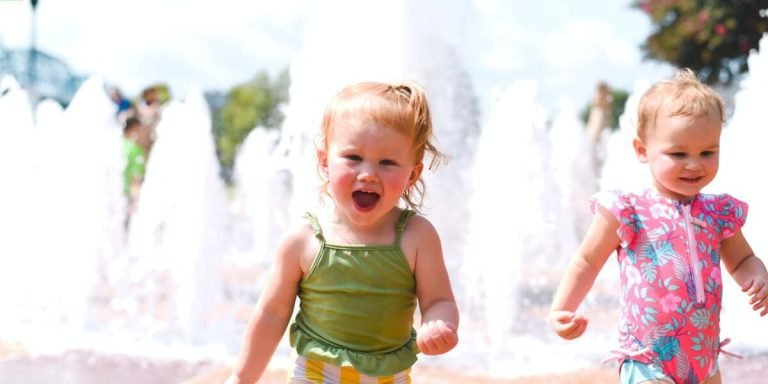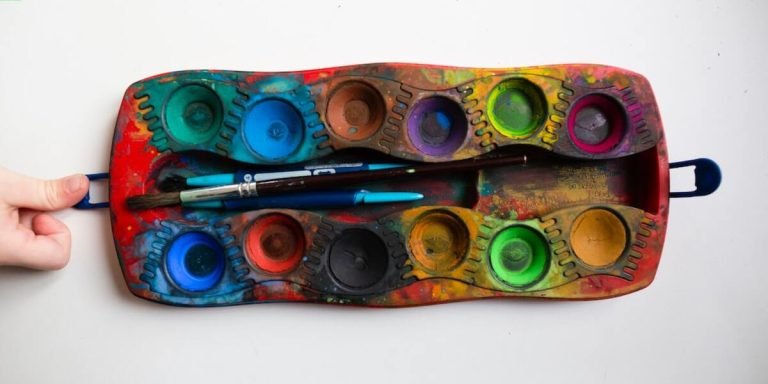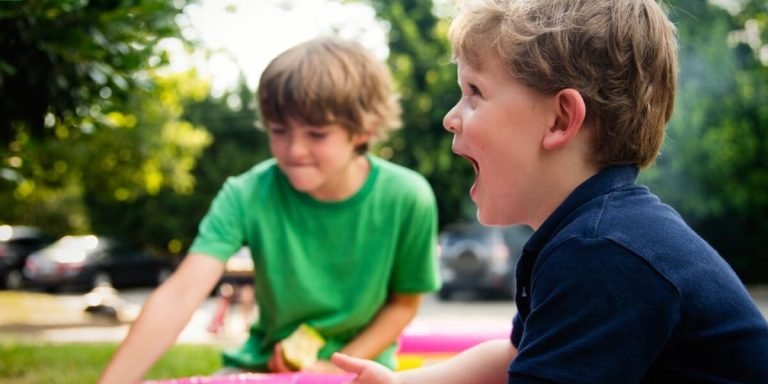Toys for Preschoolers: Inspiring Creativity and Development
Choosing the right toys for preschoolers can be a crucial step in their developmental journey. These playthings are more than just sources of entertainment; they serve as vital tools that stimulate creativity, foster cognitive growth and promote social skills among young learners.
The world of early childhood education recognizes the enormous benefits associated with purposeful playtime. When selected thoughtfully, age-appropriate toys can help preschool children grasp fundamental concepts while nurturing an environment conducive to independent thinking and problem-solving.
Did you know?
Contrary to common belief, an American Journal of Play study shows that traditional toys like blocks and puzzles stimulate creative thinking and spatial skills more than electronic gadgets in preschoolers.
Selecting Age-Appropriate Toys for Preschoolers
Choosing appropriate toys for tots during their preschool years can seem like a confusing task, but it’s easier than you might think. It’s 2023 and today’s toy market is flooded with options that merge entertainment with educational value – particularly with the influx of technology-driven products designed to foster learning while engaging young minds actively.
A child immersed in the Preschool phase represents an incredibly curious mind eager to explore, experiment and learn continually. Toys form an essential tool at this stage as they offer kids a fun way to develop cognitive abilities, fine motor skills and even social-emotional growth. Additionally, integrating technology into these early childhood education tools offers interactive experiences that further augment learning outcomes.
Consider modern toys which incorporate elements such as color recognition or basic arithmetic; they serve far more than just entertaining purposes. These edutainment resources are intended for developmental progress where children acquire fundamental knowledge through play-based activities – all reinforced by means of technological integration! So next time when thinking about purchasing ‘toys’, remember it could potentially be your child’s first step towards sturdy academic prowess.
Criteria for Choosing Developmentally Suitable Toys
Choosing developmentally suitable toys for preschoolers requires careful consideration. The primary criterion is that the toy should be age-appropriate, taking into account a child’s cognitive and motor skills at each developmental stage.
One of the key things to consider when choosing toys for preschoolers is ensuring they engage multiple senses. In 2023, many toy manufacturers are focusing on creating multi-sensory experiences through their products which boost sensory development in children.
Another factor parents need to take into account while selecting toys is sustainability and safety. Toys made from non-toxic materials with rounded edges have become popular choices due to their safety aspect. They not only safeguard your youngster but also contribute towards conserving our planet’s resources.
The role of technology in early childhood education cannot be overlooked either as it plays an increasingly significant part in learning and entertainment tools for kids these days. Technologically integrated educational game consoles or interactive storybooks can often offer wonderful supplementary avenues allowing toddlers to learn while playing without even realizing it!
However, remember that all screen time isn’t necessarily beneficial so aim for tech-enhanced playthings which encourage active engagement instead of passive video watching habits.
Safety Considerations in Preschooler Toy Selection
Choosing the right toys for preschoolers is an important part of early childhood education, especially in this technologically advanced era. Toys not only provide entertainment but also serve as learning tools that can help children develop essential skills.
A primary aspect to consider when selecting toys for preschoolers involves safety. Below are few guidelines parents and educators should adhere to ensure they pick safe and age-appropriate playthings.
1. Always Check Age Label: Toy manufacturers typically specify suitable ages on their products based on factors like skill level required, size of parts, etc. Opting for ones labeled appropriate for a child’s age group helps lower associated risks.
2. Avoid Small Parts: Preschoolers tend to be very curious and might put toy pieces into their mouths or noses creating potential choking hazards hence it’s crucial to stay away from small-sized components whenever possible.
3.Safe Materials Only – Be sure any chosen toy doesn’t contain toxic substances harmful if ingested by accident; always prefer those made with non-toxic materials.
4.Choose Sturdy Construction: Good quality material which withstands rough handling without breaking easily ensures longevity while ensuring your child’s safety isn’t compromised due its wear-down over time.
The Role of Play in Early Childhood Learning and Development
In early childhood learning and development, play holds an integral position where it serves as the foundation of intellectual, social, physical and emotional skills necessary for success in school and beyond. Lately, with technology’s inclusion in education becoming increasingly significant due to its vast potentials for learning facilitation even at preschool levels has reshaped our outlook on conventional methodologies.
One such avenue being explored is incorporating technological aspects into children’s playtime or using tech-based toys designed specifically for preschoolers. These educational toys serve a dual purpose – they engage young minds attractively while simultaneously fostering crucial developmental competencies like cognitive thinking, problem-solving abilities, fine motor skill enhancement along with digital literacy from the get-go.
Such pedagogical methods aim to strike a balance between stimulating offline activities that promote traditional core values and modern online experiences through dynamic playful interactions. Thus endorsing learners’ holistic growth within the safe confines of entertainment – firmly establishing how vital role-play contributes towards robust early youth instruction coupled seamlessly with progressive technological integration.
How Educational Toys Can Enhance Cognitive Skills
Educational toys are no longer the traditional blocks and puzzles we were used to. In 2023, they’ve evolved significantly and their contribution towards early childhood education has grown remarkably. Technological advancements have allowed for a fusion of playtime with learning, which can essentially boost cognitive development in preschoolers.
Take “toys for preschoolers”, for example; there’s more than meets the eye when it comes to these interactive tools! When children engage with these educational toys, they’re not just playing – they’re creating neural connections that lay foundational stones for future learning.
Firstly, think about problem-solving skills. Many modern-day educational toys encourage inventive thinking by presenting challenges or tasks that need solving. These could range from a digitized puzzle game on an app to building models using advanced lego sets.
As youngsters navigate through the process of finding solutions, their minds actively refine critical cognitive abilities such as reasoning and decision making.
Secondly consider language acquisition whereby many tech-integrated toys provide immersive experiences like storytelling or song functions both in diverse languages thereby expanding vocabulary comprehension at tender ages while still having fun!
Encouraging Social and Emotional Growth Through Play
In early childhood education, play holds a vital role as it is one of the main ways that children learn and develop. One key aspect of this development is fostering emotional growth and social skills – crucial aspects in preparing kids for their formal learning years.
Toys for preschoolers are more than just items to keep them engaged; they serve as tools which stimulate creativity while honing various life skills. Selectively chosen toys can aid in enhancing cognitive abilities, problem-solving capacities, motor coordination along with supporting socio-emotional progression.
Each toy presents an opportunity for interaction amongst peers or between child-educator pairs helping children grasp emotions like empathy & understanding. For instance,the traditional role-playing games where kids mimic real-life scenarios using dolls or miniature setups are perfect examples how toys encourage tangible comprehension of relational dynamics bolstered by mindful observation.
Today’s youngsters, being digital natives, gravitate towards technology-rich environments such as educational toys. This natural inclination drives changes in preschool-focused product design. These tech-inclusive playthings satisfy children’s curiosity and bridge the gap between real and virtual worlds, enhancing diverse skill development.
Prime examples of the potential behind integrating technology with toys include narrative-focused apps, touch-responsive storybooks, and coding-based games. It is crucial to teach children about balanced usage while ensuring age-appropriate content—considering screen time limits and digital health etc.
Integrating Technology with Traditional Toys for a Balanced Approach
In this digital age, the integration of technology with traditional toys has become critical in shaping early childhood education. Our young learners are increasingly exposed to gadgets and screens which can greatly influence their learning process. While this isn’t entirely negative, it’s important to strike a balance between tech-based play and physical play with real-world objects like puzzles, blocks or dolls; particularly when focusing on preschoolers.
The ideal approach would be combining these two elements for an optimized educational experience. Think about interactive storybooks that incorporate sounds and animations along with actual books kids can turn pages of – technological advancement paired perfectly well with time-honored traditions! This perfect blend not only makes learning fun but also introduces little ones to essential skills such as problem-solving while boosting creativity.
Furthermore, the right combination of traditional toys integrated cleverly alongside enhancing technologies allows children better understanding concepts through hands-on exploration apart from screen interactions alone . Moreover it fosters cognitive development by presenting challenges beyond simple tapping or swiping actions on devices.
Remember parenthood doesn’t come up overnight – let’s take small steps every day towards making our child’s future brighter one toy at a time!
Evaluating the Benefits of Tech-based Educational Games
In the digital era, tech-based games have taken centre stage in early childhood education. These interactive tools merge play with learning for toys for preschoolers, fostering both cognitive development and recreational enjoyment.
Secondly, they foster creativity among youngsters. Digital platforms often encourage users to build their virtual worlds or create unique characters – an exercise which triggers imaginative thought processes.
Thirdly, technological game interfaces are renowned for enhancing hand-eye coordination — a vital motor skill during toddler years and beyond into adult life.
However beneficial it might sound; It’s essential to remember balance is key here — Integrating Technology should never undermine traditional forms of childhood activities like puzzles pieces or teddy bear picnics! While preparing your little one for 2023 onwards balanced exposure can’t be missed out on holistic growth including social-emotional maturity which comes through engaging ‘offline’ interactions!
Therefore integrating technology with conventional methods would serve righteously towards early childhood education bestowing them ready-to-use knowledge while developing their emotional intelligence quotient too!
Maintaining a Healthy Balance Between Screen Time and Physical Play
Finding the perfect equilibrium between screen time and physical play can often feel like walking a tightrope, especially when integrating technology with traditional toys for preschoolers. The journey to maintaining a healthy balance commences with understanding their different roles in early childhood education.
Digital tools offer an array of engaging activities that foster creativity, cognitive development, and motor skills among young learners. For example, educational apps on tablets introduce concepts such as numbers or letters using interactive multimedia content – promoting faster comprehension compared to conventional methods.
However intriguing digital learning might be, it’s crucial not to undervalue the importance of tangible toys in your child’s developmental process. Traditional games enhance hands-on experiences which boost fine-tuning coordination and sensory skills uniquely.
The idea is not about demonizing screens but rather harnessing their appeal responsibly while also supplementing them effectively with old-fashioned playtime fun – think LEGO sets working harmoniously alongside puzzle-solving computer games!
1) Practice Moderation: Screen-time shouldn’t overshadow physical play; establish set hours for both these forms of engagement.
Conclusion
In essence, toys for preschoolers are so much more than just objects to keep them occupied. They serve a higher purpose in the grand scheme of childhood development: they ignite curiosity and creativity, accelerate cognitive growth and help shape social skills. Through playtime with these toys, kids get an adventurous head start into their lifelong journey of learning.
We invite you to continue exploring our website where we delve deeper into child education topics that matter most to parents and educators alike – from effective teaching strategies down to ways on nurturing emotional intelligence among children. We aim for this space always be your trusted guide as we all navigate through the exciting yet challenging journey towards raising well-rounded individuals.







